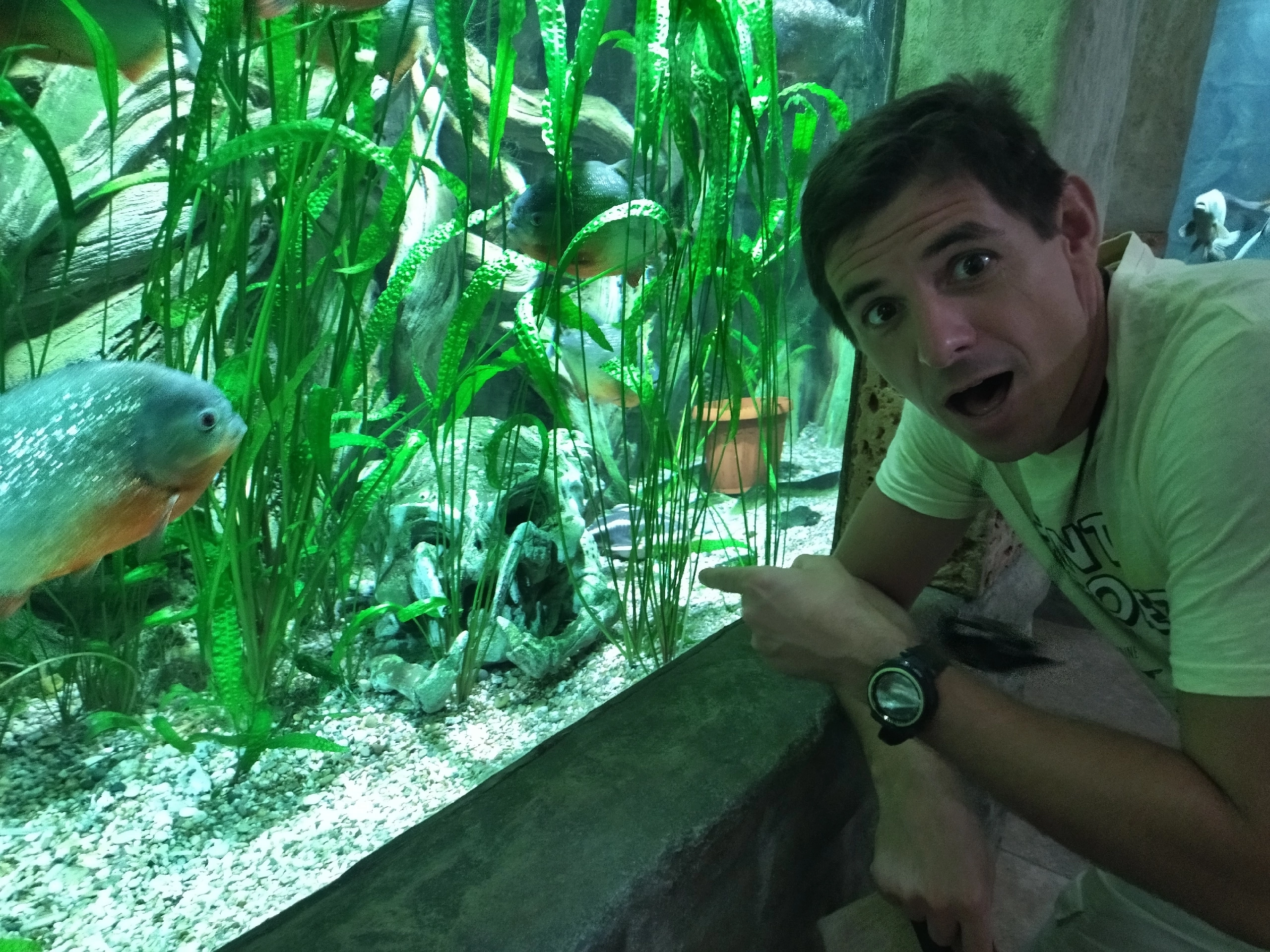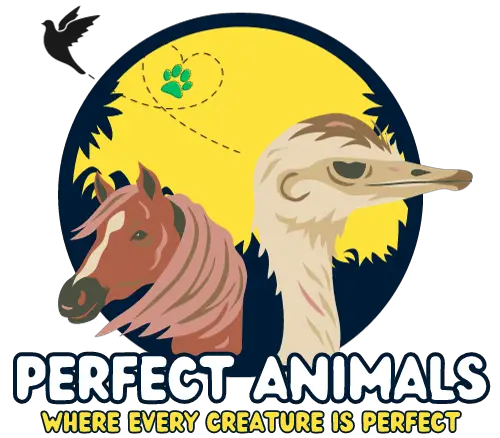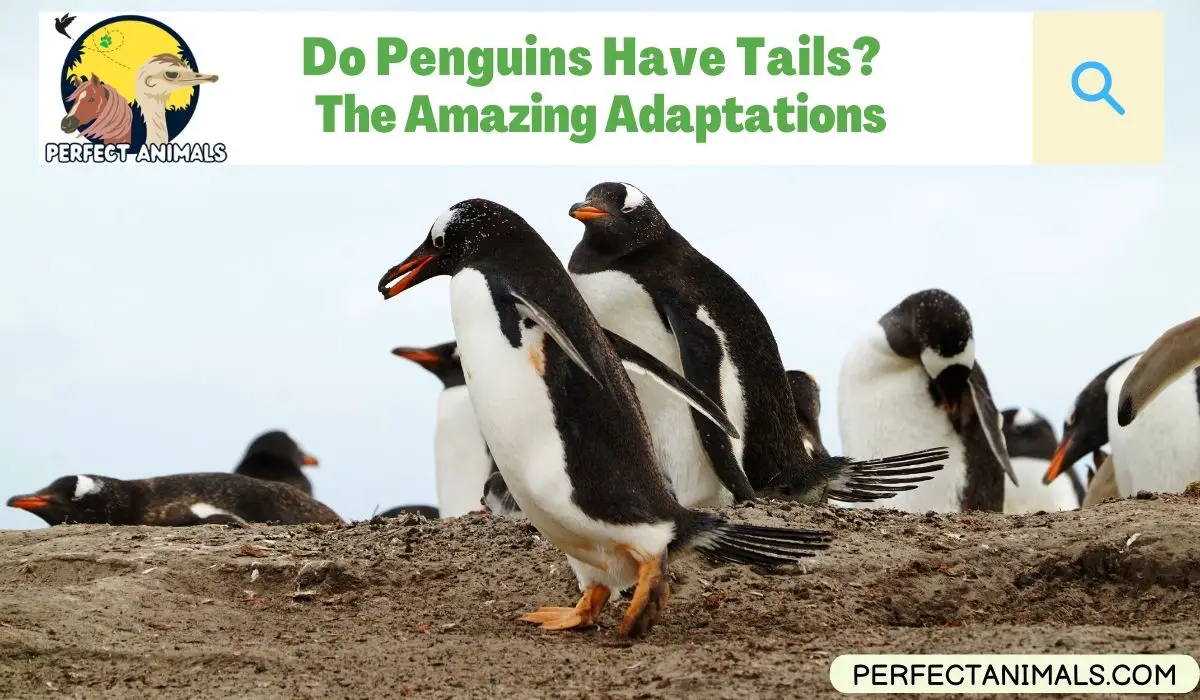Penguins are unique birds that are adapted for swimming and living in cold climates.
With their black and white plumage and upright waddle, they are easily recognizable.
But when it comes to their anatomy, there is one question that often comes up – do penguins have tails?
In this article, we’ll take a look at the anatomy of penguins to find out if they actually have tails or not.
We’ll examine baby penguin anatomy, what penguins use their tails or tail area for, and compare penguin anatomy to other birds.
So read on to learn more about whether penguins have tails!
Do Penguins Have Tails?
Yes, penguins do have tails. However, their tails are quite different from the long, flexible tails of other birds.
Penguins have short, stubby, and stiff tails that are wedge-shaped.
Unlike most bird species that use their tails for flight control and steering, a penguin’s tail plays a minimal role since penguins cannot fly.
Penguins’ tails contain short, rigid tail feathers that are typically between 14-18 in number.
Some penguin species, such as the Eudyptes penguins, have slightly longer tails measuring up to 40 cm long.
However, the tails remain short and rigid compared to flying birds.
This shape contrasts sharply with the forked tails of flying birds.
Related Article – Do Seals Eat Penguins?
Do Baby Penguins Have Tails?
Much like adult penguins, baby penguins are born with small, stubby tails.
The tails are present right from birth and help the baby penguins balance and steer as they learn to swim.
When penguin chicks hatch, their tails already have the signature short, stiff, wedge shape of adult penguin tails.
The tail feathers emerge soon after hatching and continue growing during the chick phase.
So yes, just like adult penguins, baby penguins have short tails covered in rigid tail feathers.
The main difference between adult and baby penguin tails is size – baby penguin tails are even shorter at first.
But they retain the same overall stiff, truncated shape which allows them to paddle and navigate through the water.
Within the first year, the chick’s tail length will grow to reach adult proportions.
You May Also Like – Do Orcas Eat Polar Bears?
What Do Penguins Use Their Tails For?
As mentioned previously, penguins rely on their unique wedge-shaped tails in various ways when swimming and diving.
Here are some specific uses of the penguin’s tail:
Rudder when swimming
- A penguin’s stiff tail feathers provide stability and allow them to steer and maneuver underwater like a rudder. The tail prevents rolling and aids navigation.
Balance when sitting
- Penguins often sit upright on their feet with their heels resting on the ground. Their tails provide a counterbalance so they can maintain this sturdy pose without tipping over.
Stability when standing
- Like when sitting, the penguin’s tail gives the needed balance and foundation to stand upright on land without wobbling or falling over.
Communication
- Some penguin species can articulate their wedge-shaped tails to communicate with other penguins. The positions and motions of the tail convey emotions, aggression, mating signals, and other key information.
As you can the penguin’s unique stubby, rigid tail allows streamlined swimming, acts as a rudder and keel, enables sitting and standing stability, and can even be used to signal other penguins.
For a bird that spends so much time swimming and diving, the penguin’s tail is an essential, multi-functional part of its anatomy.
You May Also Like – Do Sea Turtles Drink Water?
Why Do Penguins Flap Their Flippers?
Unlike their wings, penguin flippers are not used for flying but they do serve some important purposes when flapped.
Propulsion in the water
Penguins flap their flippers to propel themselves forward while swimming. The motion pushes their streamlined bodies through the water just like a paddle.
This allows them to cruise long distances at fast speeds.
Steering and maneuvering
Along with their tails, penguin flippers allow agile steering and navigation underwater when flapped and turned. The flippers give them great control while darting after fast-moving fish and krill.
Stability while hopping on land
Penguins use their flippers for balance when hopping and waddling on land. Flapping their flippers slightly helps counterbalance their upright bodies as they make their way awkwardly across land.
Heat exchange
Flapping flippers promote blood flow and circulation which transfers heat throughout their bodies. This allows them to maintain body temperature while plunging into frigid Antarctic waters.
Communication and expression
Penguins flap flippers vigorously during social interactions and courtship rituals. The intensity and speed of the flapping help visually signal other penguins.
Final Thoughts
Penguins are truly unique among birds when it comes to their tails and flippers. As flightless seabirds, penguins have evolved over time to have short, rigid, wedge-shaped tails instead of the long, maneuverable tails used by flying birds.
While they may look like just cute stubs, penguin tails play important roles underwater by steering, stabilizing, and propelling these agile swimmers.
Both adult and baby penguins have these signature truncated tails, using them from a very young age to paddle through frigid Antarctic waters.
The tails, along with their adapted flippers, allow penguins to thrive in their marine environment, even if they look a bit awkward waddling on land.
Resources – (for further reading)
Louisiana State University – Penguin Forensics
BioExpedition – Penguin Anatomy
Penguins International – penguin physiology

Jamie has a rich understanding of marine life, garnered through extensive study and hands-on experience with various marine organisms. He has actively participated in marine education programs, broadening public understanding of the ocean’s intricate ecosystems.

